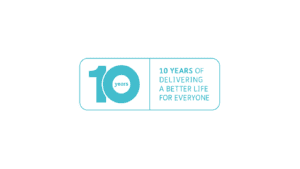As the Coronavirus pandemic swept the globe and hit the UK earlier in March this year, care homes were put under more strain than they ever have before. Working to ease the pressure on the NHS, many care organisations have and continue to act as an overspill for hospitals when they get too busy. This has meant taking on patients who potentially were still infectious with coronavirus, as demand for beds soared across the UK. We take a look at Coronavirus in care homes, and how care has been managed in cases of Covid-19.
Care teams have felt they’ve been let down by the government, being told they shouldn’t need to work any differently, even once Covid-19 had hit the UK. There has been an overall shortage of PPE (personal protective equipment), but care teams were being told by suppliers that the NHS took priority.
Care homes usually implement what is known as “barrier nursing” when someone contracts a virus. This is where the person is isolated and new gloves, mask, paper towels etc will be used for each and every patient. However, with the realisation that Covid-19 could often be asymptomatic, and without antibody tests readily available, this posed a problem for managing Coronavirus in care homes. Combine that with the sudden influx of patients from the NHS, the lack of PPE stock and such close quarters within care homes, for many it felt like they were set up to fail.
Many care workers have reported full floors of homes being wiped out by this silent killer, leaving staff devastated and terrified for their own safety, too.
The facts and figures of Coronavirus in care homes
On the 15th May 2020 the statistics on Covid-19 related deaths in the UK care sector was released. Between the period of 2nd March and 1st May 2020, there have been 12,526 deaths involving Covid-19, which is said to be 27.3% of all deaths of care home residents.
Coronavirus in care homes was the leading cause of death in male residents and second leading cause of death in women, after Dementia and Alzheimer’s, which was also the main pre-existing condition found amongst Coronavirus deaths.
Figures have been taken from the Office for National Statistics, published on 15th May 2020.
Are outbreaks of Covid-19 inevitable in care homes?
Covid-19 is highly risky for people living with multiple pre-existing conditions, is highly infectious, and many care teams lack the means to closely monitor and track potential symptoms of the virus amongst everyone in their care. By the time the government had addressed the nation on the severity of the coronavirus pandemic, many lives had already been lost as the virus found its way into care settings. It is generally accepted that hospital discharges of untested patients who moved into care homes increased the risk of contracting the virus by other residents.
And in addition to this, self-isolation measures led to sudden staffing shortages, with many homes having no chance but to bring in agency staff, meaning care workers are moving from home to home, once again increasing the risk of transmission.
For the homes that have been successful in managing an outbreak, this is largely due to a proactive approach to closely monitoring and managing symptoms and suspected cases of Covid-19 and essentially doing everything possible to stop it in its tracks.
Contact tracing
It is advised that carers should only work in one home while this pandemic is still ongoing and daily temperature checks should be carried out. All contact should be treated as close contact during the pandemic, and staff should be supported if they need to isolate after contact with a confirmed Covid case. Care facilities need to emphasise that staff will not be penalised and should not come to work when they are not feeling 100% even if there is a staff shortage. All care workers should be encouraged to report if they are feeling unwell and remain at home if they are showing symptoms. Testing should be arranged for these members of staff – there is now a government service dedicated to conduct testing in care homes (https://www.gov.uk/apply-coronavirus-test-care-home) which in time is expected to allow everyone in a care home to be tested.
Strict isolation policies
Carers should be segregated and only work with either suspected/confirmed residents with Covid-19, or those who are not infected and have clear signage as to who is in isolation and who is not.
There needs to be a strict isolation policy for anyone showing symptoms or suspected to have symptoms, including 14 day isolation for anyone being transferred from another home or facility, plus testing for these residents where possible. Residents who are isolating should do so even for meal times and all non-essential travel outside the home should be cancelled. Care teams must ensure all immunizations are up to date.
Be aware of potential asymptomatic residents
If transmission in a care home is suspected, then testing those who have potentially come into contact with the virus could highlight asymptomatic patients who would have otherwise gone undetected, thus causing a larger outbreak and more potential fatalities.
How Nourish is helping care homes to closely monitor and manage the spread of Covid-19
At Nourish, we have created digital protocols for managing Covid-19 across care teams and people receiving care and support: our Covid-19 Trackerallows care homes to record, track and monitor symptoms and cases of Coronavirus within each care team.
The protocol includes:
- Recording symptoms, and tracking the progression of symptoms for each person receiving care;
- Supporting teams in providing barrier nursing, by making it clear to care workers who has shown symptoms or has tested positive so they can take appropriate infection control measures;
Nourish has also launched a free version of a Covid-19 tracker. This tracker can be accessed from any web browser, it’s free of charge, and you do not need to be a Nourish customer to use it. The tracker will allow you to track cases of infections across people in your care as well as your staff by closely monitoring symptoms and other factors. You can record:
- Suspected cases of Covid-19
- Those who have been tested/awaiting results
- Those who are confirmed “all clear” of the virus
- Those who are isolating due to high risk
- Those who are recovering
Nourish has also been working with the NHS to enable anonymised data to be shared helping towards getting a better understanding of this pandemic across care providers. If you would like to find out more and sign up for the tracker, click here.
In addition to this, during the Covid-19 outbreak, Nourish has also enabled:
- Families to be reassured their loved ones are receiving the support they need though our family portal
- GPs to review observations and care provided by the care team to support remote appointments
For further reading:
- British Geriatrics Society is continuing to release updated best practices for managing care for older people during the pandemic (https://www.bgs.org.uk/resources/covid-19-managing-the-covid-19-pandemic-in-care-homes) including zoning and cohort management;
- The Social Care Institute for Excellence (SCIE) has released helpful guidelines on managing support for people with learning disabilities (https://www.scie.org.uk/care-providers/coronavirus-covid-19/learning-disabilities-autism/care-staff) including information on how to communicate and encourage social distancing;







